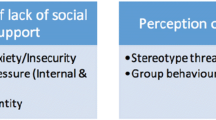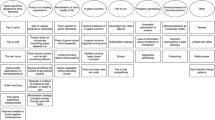Abstract
We simulated the commercially available multi-line slot machine game “Money Storm,” including its bonus wins. Our results show that after a specified amount of time (such as 1 or 50 h), when players played a single line, there were marked differences between one player and the next—a few won a lot, others lost far more than average. When playing 20 lines there were fewer big winners and fewer players quickly losing a large percentage of their money. We simulated a Gambler’s Ruin scenario whereby players arrived with $100 and made $1 wagers until broke. Again we saw a reduction in the variability among player as the number of lines wagered increased, fewer players lost their entire bankroll quickly, and fewer players had big wins. The bonus wins in Money Storm contribute approximately 24 % to the payback of the game, and our simulations of bonus wins shows that with 20 lines wagered the players spend approximately 11 % of their time in bonus wins. With one line wagered, there are no losses disguised as wins while with 20 lines wagered the majority of hits are losses disguised as wins. Players using multi-line machines can thus tune the characteristics of the machine gambling experience to match their preferred pattern, though most seem in practice to bet on the most possible lines. Our results serve to inform researchers, counsellors, gamblers and others about how slot machines are designed, and the effect that wagering on multiple lines has on short-term and long-term play, bonus wins, and losses disguised as wins.

Similar content being viewed by others
References
Blaszczynski, A., & Nower, L. (2002). A pathways model of problem and pathological gambling. Addiction, 97(5), 487–499.
Blaszczynski, A., Sharpe, L., & Walker, M. (2001). The assessment of the impact of the configuration on electronic gaming machines as harm minimisation strategies for problem gambling. A report for the Gaming Industry Operator’s Group. Sydney: University Printing Service.
Custer, R. L. (1984). Profile of the pathological gambler. Journal of Clinical Psychiatry, 45(2), 35–38.
Custer, R. L., & Milt, H. (1985). When luck runs out. New York: Facts on File.
Dixon, M. J., Harrigan, K. A., Sandhu, R., Collins, K., & Fugelsang, J. A. (2010). Losses disguised as wins in modern multi-line video slot machines. Addiction, 105(10), 1819–1824.
Dow Schull, N. (2012). Addiction by design. Princeton, NJ: Princeton University Press.
GLS Research (2011). 2010 Clark County residents study: Survey of leisure activities and gaming behavior. A report prepared for the Las Vegas Convention and Visitors Authority.
Greene, J. (1982). The gambling trap. Psychology Today, 16(9), 50–55.
Harrigan, K. A., & Dixon, M. (2009). PAR Sheets, probabilities, and slot machine play: Implications for problem and non-problem gambling. Journal of Gambling Issues, 23, 81–110.
Harrigan, K. A., & Dixon, M. (2010). Government sanctioned “tight” and “loose” slot machines: How having multiple versions of the same slot machine game may impact problem gambling. Journal of Gambling Studies, 26(1), 159–174.
Haw, J. (2008). Random-ratio schedules of reinforcement: The role of early wins and unreinforced trials. Journal of Gambling Issues, 21, 56–67.
Haw, J. (2009). The multiplier potential of slot machines predicts bet size. Analysis of Gambling Behavior, 3(1), 1–6.
Livingstone, C., Woolley, R., Zazryn, T., Bakacs, L., & Shami, R. (2008). The relevance and role of gaming machine games and game features on the play of problem gamblers. Adelaide, SA: Independent Gambling Authority of South Australia. http://www.iga.sa.gov.au/publications.html.
Ministry of Public Safety and Solicitor General (2003). British Columbia problem gambling prevalence study. Final Report, March. Retrieved May 19, 2007, from http://www.bcresponsiblegambling.ca/responsible/bcprobgambstudy.pdf.
Moran, E. (1970). Gambling as a form of dependence. British Journal of Addiction, 64, 419–428.
Queensland (2002). Office of the Government Statistician & Queensland. Gambling Policy Directorate. Queensland household gambling survey 2001 [electronic resource]: [Web site] Queensland Treasury, Brisbane: http://nla.gov.au/nla.arc-51569.
Turner, N. (2011). Volatility, house edge, and prize structure of gambling games. Journal of Gambling Studies, 27, 607–623.
Turner, N., Horton, K., & Fritz, B. (2009). The relationship between explicit and implicit learning processes and probable pathological gambling. International Gambling Studies, 9(3), 245–262.
Walker, M. (1992). The psychology of gambling. London: Pergamon Press.
Acknowledgments
This research was funded in part by the Ontario Problem Gambling Research Centre. Computer simulations were programmed by Linus Shu.
Conflict of interest
The authors declare they have no conflict of interest.
Author information
Authors and Affiliations
Corresponding author
Rights and permissions
About this article
Cite this article
Harrigan, K., Dixon, M. & Brown, D. Modern Multi-line Slot Machine Games: The Effect of Lines Wagered on Winners, Losers, Bonuses, and Losses Disguised as Wins. J Gambl Stud 31, 423–439 (2015). https://doi.org/10.1007/s10899-013-9436-z
Published:
Issue Date:
DOI: https://doi.org/10.1007/s10899-013-9436-z




